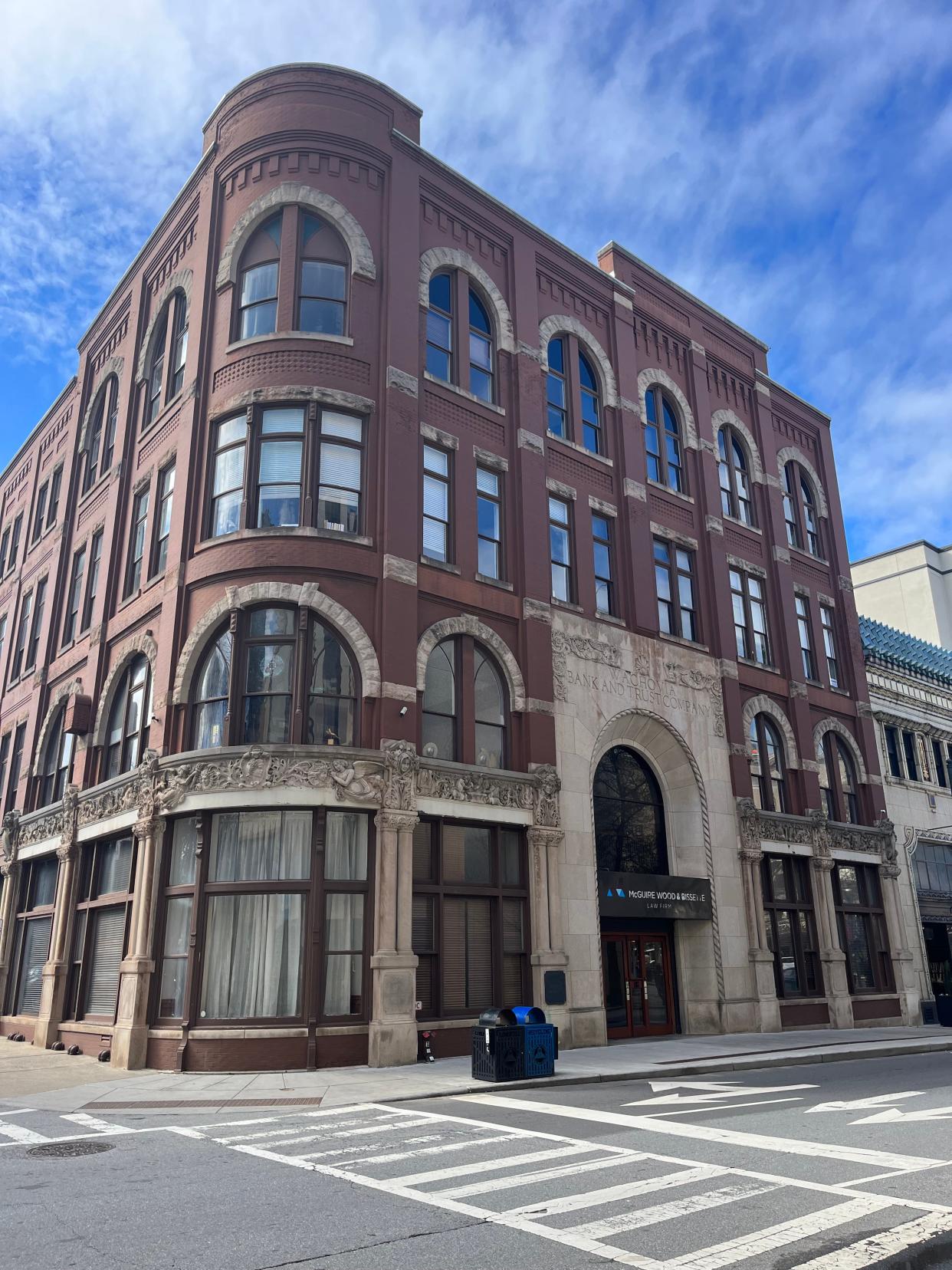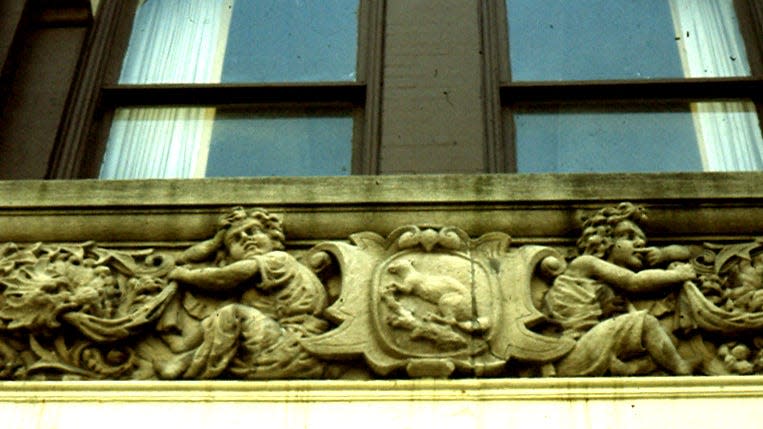Visiting Our Past: Ornamented buildings have become things of the past

Area architecture used to exhibit a pop exuberance, incorporating people-friendly ornament. Today, art is divorced from the edifice and relegated to the landscape in the form of sculptural installations.
Buildings no longer dress up for the public, but focus on creating exclusive environments inside for their clientele. The Kress building on Patton Avenue is one of the most obvious examples of a dressed-up building. Its front, which faces the main thoroughfare, is gloriously decked out with colored, glazed terra cotta in Art Deco style. Its back sheds all niceties and serves as a brick warehouse.
Before the Aztec-inspired designs of the Kress Building and Douglas Ellington's City Hall and S&W Cafeteria, a more primitive Asheville had borrowed a Biltmore Estate stone carver to create a little masterpiece. Fred Miles' frieze on the Drhumor Building one block up Patton Avenue from Kress, tells the story of the transference of Golden Age fabled power to the mythic endeavors of American enterprise.
Miles' representation of florist C.T.C. Deake on the east side of the Drhumor is a staple of local lore. Less well known is the rightmost long panel on the north side. Two angelic figures wrestle cloth from beasts on either side of an emblematic mink. Pioneer industry has entered the pantheon.

Commercial palaces (like churches, the other big creator of artful buildings) wanted to attract common people and instill feelings of otherworldliness in them. No project in the region reached further with this goal than the Grove Arcade, begun in 1924 by Edwin Wiley Grove and designed by his architect, Charles Parker.
Dozens of geometrical, floral, animal and heraldic figures -- mostly of molded, fired clay -- grace the arcade, creating a fantasy city within walls. Parker drew on a Renaissance tradition to invent his bestiary. He sent detailed drawings to the Atlantic Terra Cotta Company in Staten Island, New York -- the leading manufacturer at the time -- and got back winged lions, grotesque heads, acanthus clusters, and stylized shields to apply to walls, panels, pediments and pier supports.
In 1924, 38-year-old Parker already had a reputation for imagination and whimsy. He designed houses in Grove's subdivisions in North Asheville. For Charles Westall's house at 48 Sunset Parkway, he tore the shingles he bought before overlapping them on the roof to create rough edges.
In what was originally a spec house but became his own at 54 Ridgewood Place, Parker installed a turntable in the garage for his car.
At the time he was overseeing the Arcade, Parker fashioned his own grotesque heads out of plaster, painted them, and appended them to the end of his house's exposed beams.
"That was before he met mother," says his daughter, Annette Sechen. "After he died, she had them all taken out." She was a pragmatic country girl, and her tastes were plainer.

Rob Neufeld wrote the local history feature, "Visiting Our Past," for the Citizen Times until his death in 2019. This column originally was published Nov. 5, 2005.
This article originally appeared on Asheville Citizen Times: Visiting Our Past: Ornamented buildings have become things of the past

